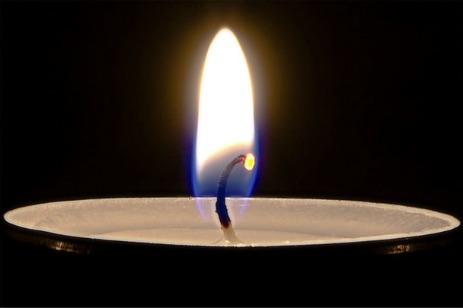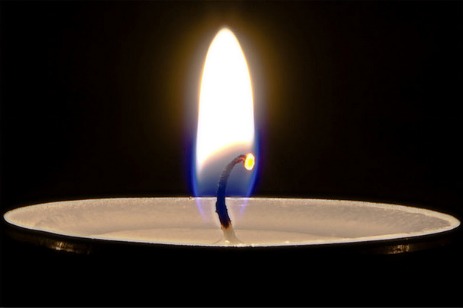Send your question to Umbra!
Q. Dear Umbra,
OK, so we don’t want to burn conventional candles because they’re made from petroleum. We don’t want to burn soy candles, because soy crops are one the highest users of pesticides (yes, I know there’s organic soy, but still). And now I understand we don’t want to burn palm oil candles, because of how forests are being cleared in Indonesia and other places to make room for palm trees. So, what kind of wax/oil is the right kind for candles?
Jonathan
Santa Monica, CA
 We didn’t start the fire, but we did light this sustainable candle.Photo: Francesco di BellinzonaA. Dearest Jonathan,
We didn’t start the fire, but we did light this sustainable candle.Photo: Francesco di BellinzonaA. Dearest Jonathan,
Your letter arrived at a perfect time. Just as I was blowing out candles on my organic, vegan chocolate birthday cake, I made a wish to live in a world free of toxic candles. And voilà — your letter arrived!
Sounds like you’ve got a fire lit under you for less toxic, more sustainable mood lighting. I’ve never said it before but I will from here on out: “Learn before you burn.”
So here’s a mini-class on candles:
As you perceptively pointed out, conventional candles are made out of petroleum products — namely paraffins. When you burn them, it’s like having a small 18-wheeler spewing diesel exhaust in your living room. Volatile organic compounds, or VOCs, are released, causing indoor air pollution. The array of neurotoxins and carcinogens in these innocuous looking little lights, including toluene and benzene, are not my idea of mood lighting. Toluene and benzene are categorized by the Environmental Protection Agency as known human carcinogens.
Then there’s the scented candle scandal. The “fragrance” ingredients of these candles are a bouquet of chemicals linked to cancer; neurotoxicity; developmental and reproductive toxicity; allergies; skin, eye, and lung irritation; and more!
While you’re avoiding things, steer clear of stearic acid, a primarily animal-derived fat from the meat industry.
Soy candles are better in the indoor air pollution department. But non-organic soy is a pesticide-intensive monocrop that’s not so sustainable. If you buy soy candles for your candelabra, organic soy candles are a far better option.
I’m glad you brought up palm oil candles, Jonathan. Palm oil is an incredibly versatile substance found in a huge array of products we consumers consume — Kit Kat bars, Oreo cookies, Pop-Tarts, lotion, and biodiesel. Palm oil comes from the fruit of palm trees. Though that may sound inherently sustainable, the way palm oil is being farmed is not, especially in Indonesia. Important carbon-capturing rainforests and peatlands are being destroyed at an alarming rate. Indonesia was officially named in the 2008 Guinness Book of Records as the country with fastest rate of deforestation. (Another point to illuminate here — Indonesia is also the third-largest emitter of greenhouse gases, due in large part to said deforestation.)
As for sustainable candles, Jonathan, nothing holds a candle to beeswax. Look for beeswax candles without additives and buy local beeswax when possible, thus supporting local bees and beekeepers. Your beeswax will smell faintly of honey and isn’t toxic when lighting up a room. Another added bonus of beeswax is that it burns longer than those paraffin polluters.
I’d like to give a glowing recommendation to vegetable oil, but to be honest, I’ve never tried it. If you’re interested in using oil as your flame source, look for organic vegetable oil and consider straining and reusing oil when possible. You can make your own French-fry smelling lantern. Find out how to here.
So there you have it, Jonathan. Thanks for helping to shed light on this subject.
Illuminatedly,
Umbra



